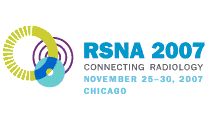
Abstract Archives of the RSNA, 2007
Jin Young Kwak MD, Presenter: Nothing to Disclose
Eun-Kyung Kim, Abstract Co-Author: Nothing to Disclose
Mi Jin Yun, Abstract Co-Author: Nothing to Disclose
Arthur Eung-Hyuck Cho MD, Abstract Co-Author: Nothing to Disclose
Min Jung Kim MD, Abstract Co-Author: Nothing to Disclose
Seon Hyeong Choi, Abstract Co-Author: Nothing to Disclose
Ki Keun Oh MD, Abstract Co-Author: Nothing to Disclose
Eun Ju Son MD, PhD, Abstract Co-Author: Nothing to Disclose
Cheong Soo Park, Abstract Co-Author: Nothing to Disclose
Woong Youn Chung, Abstract Co-Author: Nothing to Disclose
Ki Whang Kim MD, Abstract Co-Author: Nothing to Disclose
et al, Abstract Co-Author: Nothing to Disclose
et al, Abstract Co-Author: Nothing to Disclose
To compare the diagnostic accuracy of integrated 18F-FDG PET/CT with ultrasonography (US) for differentiating benign from malignant focal thyroid lesions incidentally found on 18F-FDG PET/CT
US-guided FNAB was performed on 14,434 subjects from October 2002 to December 2006. This study included 70 focal thyroid lesions at 68 patients (56 female and 12 male), aged 22 – 75 years (mean 55.8 years). The mean size was 16.5 mm (4 – 50 mm). The final confirmation was determined by the surgical pathology (n = 37) or cytology (n = 33). There are 41 cancers and 29 benign lesions. The PET/CT scans and US images were retrospectively reviewed by a nuclear medicine physician and radiologist. We classified the thyroid nodule as probably benign and suspicious malignancy, by the US features. We evaluated the risk of malignancy in thyroid nodule with FDG-PET uptake and its association with maximum SUV, using logistic regression. A ROC curve analysis was also done to compare the accuracy of maximum SUV to differentiate benign from malignant lesions. Kappa and logistic regression test were used to compare two subgroups by US classifications between benign and malignant lesions. P values < 0.05 were considered to indicate a statistically significant difference.
The average maximum SUV of the malignant nodules was 8.69 ± 9.31 (95% CI, 5.84-11.54), and this was not significantly higher than that (5.94 ± 3.09; 95% CI, 4.81-7.07) of benign lesions (p>0.05). When only the maximum SUV was applied to differentiate benign from malignant thyroid lesions for the ROC curve analysis, the AUC of PET was 0.503. The seventy thyroid nodules were divided 41 suspicious malignant lesions into 29 probably benign nodules, according to the US features. There was significant difference between the two groups in the percentage of malignancy (p=0.000 and odds ratio=27.3), using kappa and logistic regression.
Our data suggest that US analysis of focal thyroid FDG-PET incidentaloma regardless of SUV can be mandatory to differentiate benign and malignant thyroid lesions.
US can differentiate benign from malignant thyroid incidentalomas with focal increased 18F- FDG uptake on PET examinations.
Kwak, J,
Kim, E,
Yun, M,
Cho, A,
Kim, M,
Choi, S,
Oh, K,
Son, E,
Park, C,
Chung, W,
Kim, K,
et al, ,
et al, ,
All Thyroid Lesions That Uptake on PET are Not Malignancy: How Should We Approach?. Radiological Society of North America 2007 Scientific Assembly and Annual Meeting, November 25 - November 30, 2007 ,Chicago IL.
http://archive.rsna.org/2007/5007316.html

